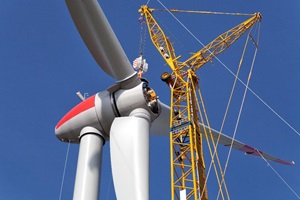- Indian Point
- Offshore Wind
- New York State
East Coast Now Home to Record Lease Payment for Offshore Wind

If there was any remaining doubt of the commercial viability for large-scale offshore wind development off the East Coast, an auction held just before the end of the year for the rights to develop an offshore wind farm off Long Island, New York should put that question to rest. The bidding war was fierce, with 33 competitive rounds among some 14 developers, forcing the planned one-day auction into a second day. When the dust settled on the auction, the US subsidiary of Norway’s oil giant Statoil won the auction with its offer to pay the US Department of the Interior (DOI) $42,469,725 for the lease rights to develop.
Forty-two and a half million dollars. This is more than twice the total of winning bids in 11 other previous offshore wind power auction sites combined. It’s reportedly more than twice the value of offshore oil & gas permits in auction under the DOI in the Gulf of Mexico. Proximity to the high-priced electricity market of Long Island and New York City is a clear advantage to the site.
Increasing Capacity
The New York Wind Energy Area, located 14-30 miles offshore, spans 79,350 acres and covers water depths of 65 feet-131 feet (20 m-40 m). The area could accommodate more than 1 GW of wind capacity, and likely more as turbine nameplate capacity continues to increase. The largest offshore wind turbine currently commercially available is an 8 MW unit from MHI-Vestas with a 164 meter rotor (538 feet). Siemens is well on track to uprate its 7 MW units with 154 meter rotors (505 feet) up to 8 MW. Four to six years from now, the newest turbines will be exceeding 10 MW per unit.
One gigawatt of offshore capacity served by next-generation 10 MW turbines would be a wind farm with only 100 turbines. It is perhaps not entirely a coincidence that New York’s Governor Andrew Cuomo announced in early January that the state had come to an agreement to decommission the aging 2 GW Indian Point nuclear power plant located up the Hudson River. It would take 200 next-generation offshore wind turbines to match the lost nameplate capacity of Indian Point. Two hundred turbines in one plant is entirely achievable given that the largest existing wind farm currently in operation, the 630 MW London Array, is made up of 175 turbines.
Enormous Opportunity
To be clear, Indian Point is not being replaced by offshore wind directly, but wind will help fill in the gap left over from the plant’s retirement. Statoil, among others, sees a healthy future with onshore and offshore wind, both as an enormous business opportunity and as a hedge against its historical focus on oil & gas. Notably, only a short while before the December offshore wind auction round, Statoil pulled out of its investments in the Canadian tar sands oil extraction at a significant loss, in effect exiting one of the most greenhouse gas-intensive energy extractions in favor of one of the cleanest sources of energy.
There will still be many steps in permitting and development before Statoil builds its offshore wind plant, but the amount of money it was willing to pay shows there’s major potential. The Northeast exhibits the confluence of factors inevitable to supporting major offshore investments: high energy prices, high energy demand, proximity to major electricity demand, a relatively shallow ocean bed, and strong and consistent offshore wind.